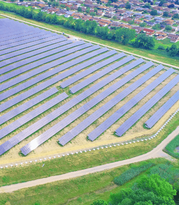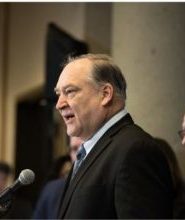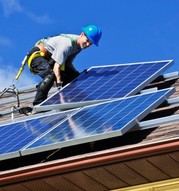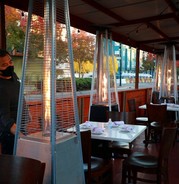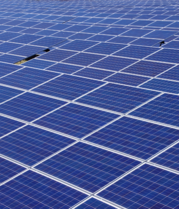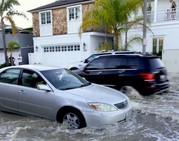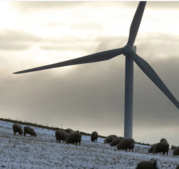Transportation Initiatives Play Key Role in County Strategy to Achieve Climate Goals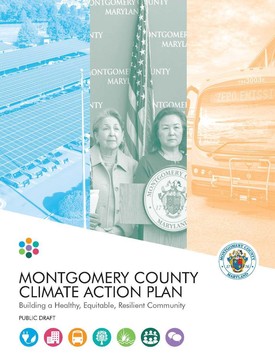 Montgomery County Executive Marc Elrich released a Draft Climate Action Plan last month that lays out a plan to cut greenhouse gas (GHG) emissions by 80 percent by 2027 and by 100 percent by 2035. The 87 climate actions outlined in the plan lay the path to achieving the County’s ambitious climate goals while building a healthy, equitable and resilient community. MCDOT is identified as either the lead or a contributor in carrying out transportation actions and related initiatives to help meet these goals by: - Expanding tree canopy.
- Limiting cars in urban areas and implementing congestion pricing; implementing traffic management systems.
- Advocating for a local vehicle carbon gas tax.
- Expanding public transit service, pedestrian and bicycle infrastructure and a shared micro-mobility network (i.e. bikeshare, e-scooters).
- Supporting community-wide resident and business adoption of electric vehicles; electrifying public buses, school buses and the public vehicle fleet; and expanding the electric vehicle charging infrastructure network.
- Supporting telework and other transportation demand management strategies.
- Repairing and upgrading stormwater drainage and management systems.
Read full draft action plan that will be finalized in the spring of 2021. |
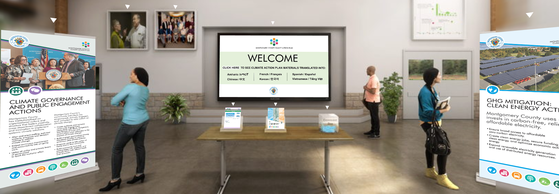 Screenshot of the virtual information room Montgomery County has launched a virtual information room, an interactive tool that allows residents to visually engage with the Draft Climate Action Plan by using a computer or mobile device. Visitors to the virtual information room can review plan materials, including climate actions and vulnerability maps and leave feedback by completing a brief survey. In addition, several elements of the Climate Action Plan are available to review in other languages, including Amharic, Chinese French, Korean, Spanish and Vietnamese. To view the climate plan, a list of climate events and to take the survey (available in multiple languages) or provide other feedback before the public comment period closes on Feb. 28, visit montgomerycountymd.gov/climate.  The virtual youth Town Hall was hosted by the County Executive, Montgomery College, and Montgomery County Public Schools as an opportunity for students to discuss climate action. The event featured outstanding youth presenters and opportunities for young climate leaders to connect and provide feedback on the Draft Climate Action Plan. The event is available online for those who were not able to attend and the LocalDVM article provides more details. |
 Photographs, drawings, videos, poems, digital art and memes are needed to help make Montgomery County’s Climate Action Plan more engaging and accessible. Entries in the art contest may be featured in the County’s CAP and other County materials. Winners of the Climate Change Plan Art Contest will receive $100! Deadline for the contest has been extended to February 28, 2021. Learn more. |
|
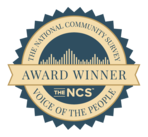
The County’s draft Climate Action Plan spells out strategies for reducing GHG emissions and climate-related risks to the County’s residents and businesses, and the built and natural environment. In the meantime, MCDOT has forged ahead on initiatives that are already making a difference.
In 2020, MCDOT received a Voice of the People (VOP) Award for transformation in mobility, which recognized the department’s shift over the past five years from an almost exclusive focus on congestion reduction to a balanced transportation system that provides a variety of travel options for residents, businesses and visitors. See what else MCDOT has already been doing to help the climate: |
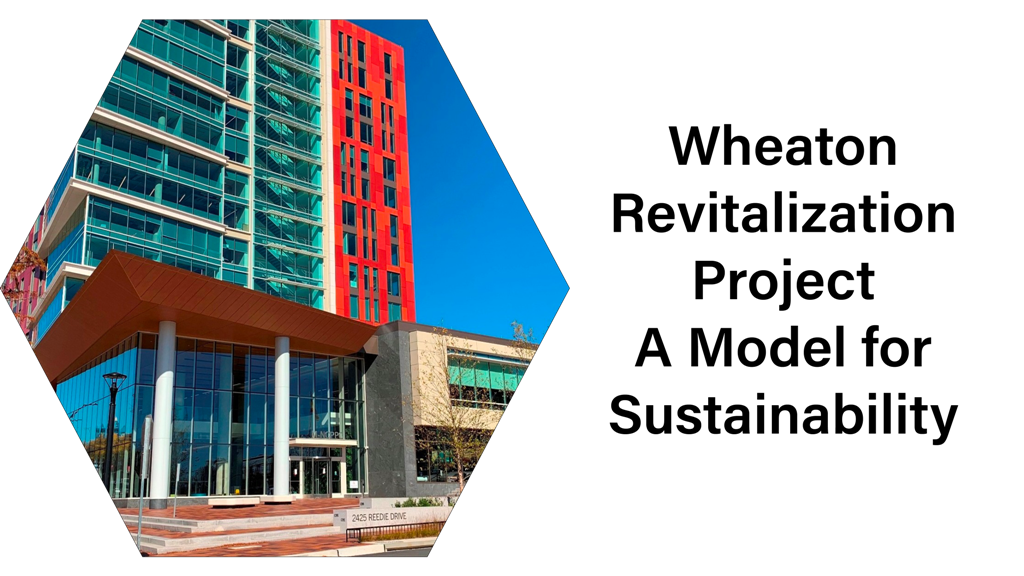 MCDOT oversaw construction of the project that was built inside the Wheaton Triangle business district on a former MCDOT parking lot. The building was designed to achieve LEED (Leadership in Energy and Environmental Design) Platinum certification and has many innovative sustainable design features, including geothermal heating and cooling, green roof areas, water harvesting and energy controls. The garage features electric vehicle (EV) charging stations, motion sensor LED lighting, bike racks and a bike storage room. Learn more. Specific energy-efficient and environmental design features include: - EV Charging Stations- 3 Level 2 Dual port Chargepoint EV Stations with electrical infrastructure for future expansion.
- Bike Racks- 13 Short-term bike racks with capacity to secure 26 bikes.
- Bike Storage Room- Secure room for building tenant employee bike storage.
- Parking Guidance System- Parking availability system will display number of parking spaces available in the garage.
- Garage lighting- Motion sensor LED Lighting.
- CO monitoring- Automated Carbon Monoxide ventilation system.
- Systems located in the underground garage that support the LEED Platinum building above.
- Geothermal Wells- 150 geothermal wells under the parking garage assist in the heating and cooling of the building.
- Water Reclamation System- purifying and reusing grey water to operate toilets.
- Building Automation System- used to optimize the HVAC system operations.
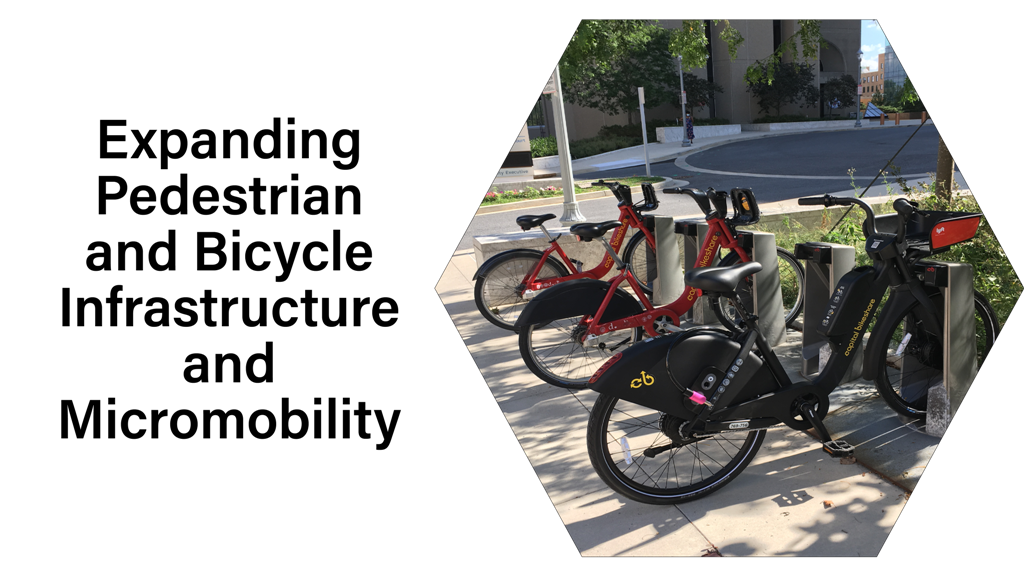 - Pedestrian connections and safety improvements to enhance walkability throughout the County.
- Enhancing mobility using transportation alternatives to cars by building bikeways, sidewalks and trails; transit centers; and ADA-compliant bus stops.
- The Safe Routes to Schools program has made pedestrian and bicycle safety improvements near every public and most private schools.
- Continued expansion of biking infrastructure, including separated bike lanes, safety-enhanced intersections and bike racks. Learn more. Be safe.
- Install and operate Capital Bikeshare network of stations. There are more than 90 stations in the County. Learn more.
- Developed partnerships with providers of dockless e-scooters and e-bikes to create a pilot program to test these micromobility modes of transportation.
- Installed parking corrals for micromobility devices in busy urban areas and developed other communication efforts and incentives to encourage riders to park them in areas that do not interfere with safe pedestrian movements. Learn more.
- Installed free bicycle parking areas in County parking garages.
- Established BikeMatch MoCo program that gives back to the community through collecting and distributing bike donations to promote alternate transportation for those in need.
- Efforts to implement complete streets standards to create more pedestrian and bicycle friendly urban environments.
- Intersection improvements that improve traffic flow also reduce air pollution resulting from idling cars.
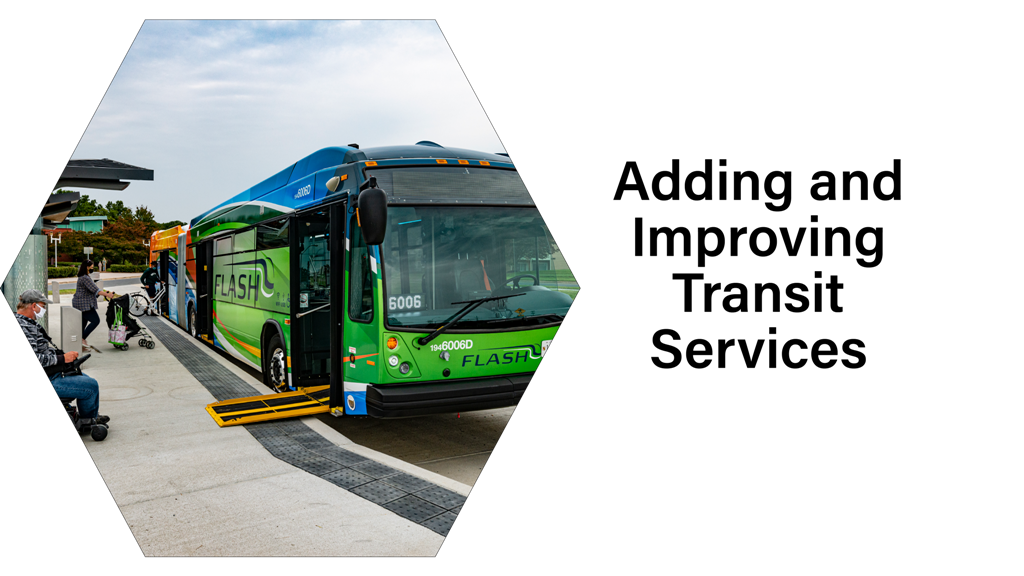 - Despite the pandemic, MCDOT launched the US 29 corridor FLASH in October 2020. FLASH is Maryland’s first Bus Rapid Transit (BRT) service and includes buses that serve more passengers and aim to attract new transit riders from personal vehicles and improve service for existing transit riders. The project also included new pedestrian improvements, bike infrastructure and new Capital Bikeshare stations. Learn more. Read DEP's blog post.
- Planning is underway for two more FLASH BRT lines along Veirs Mill Road (MD 586) and MD 355.
- Launched a pilot microtransit concept bus service for Montgomery County in 2019, called the Flex, providing on-demand service within two zones: Rockville and Glenmont/Wheaton. Learn more.
- Ride On ExtRa express bus service along MD 355 that was launched in 2017.
- Ongoing operation of Ride On bus system, the largest locally-operated bus network in the DC metro region. More than 75 percent of Ride On’s fleet uses alternative fuels (hybrid electric-diesel, compressed natural gas or clean diesel, and, as of 2020, fully electric).
- Ride On’s bus stop improvement program has improved safety and accessibility at more than 3,204 bus stops.
- Ride On’s Equipment Maintenance and Transit Operations Center is LEED (Leadership in Energy and Environmental Design) Gold certified and includes the following features:
- Solar lighting on the parking lot roof;
- LED exterior lighting;
- Active and passive noise reduction measures to reduce impacts to surrounding communities;
- An elevator with an EcoDisc motor that uses up to 70% less energy than conventional elevators, and;
- More than 4 acres of vegetated roof.
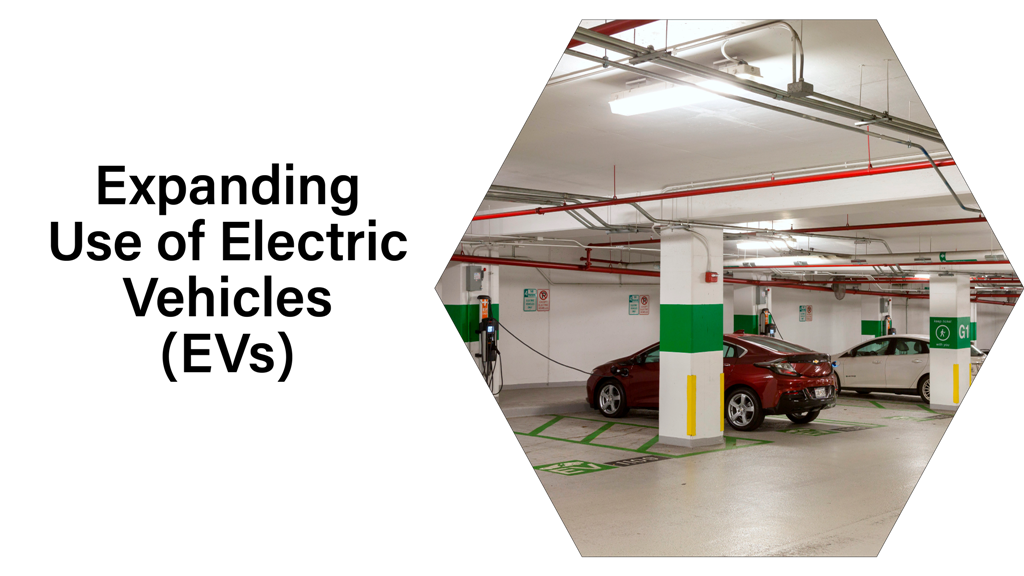 MCDOT has been working to promote and deploy Electric Vehicles (EVs) in as many of its functions as possible. Progress to date includes the following: - Won grant to purchase first all-electric buses for Ride On fleet, resulting in lower fuel costs and improved reliability.
- Ride On bus fleet uses Earthlifts vehicle lifts, which are 35% more energy efficient than traditional lifts by generating energy as the vehicle lowers. These lifts also use biodegradable oil and recyclable batteries and are wireless.
- Provide public access to electric vehicle charging stations in most MCDOT parking facilities.
- Collaborated with the Department of Permitting Services to create guidelines for installing EV charging stations at private homes. Continuing to monitor and improve the program.
- Working to establish an EV group buy program to reduce costs to residents and businesses to buy or lease EVs.
 MCDOT recently completed its Countywide conversion of streetlights from predominately high pressure sodium (HPS) to light-emitting diode (LED). LED streetlights offer many benefits, including greater energy efficiency, longer life expectancy, and reducing maintenance requirements. LEDs never fully go out, but decrease in illumination over time, and therefore promote greater community safety because they always offer some degree of illumination, even when they are technically in need of replacement. Additionally, LEDs offer an improved color rendition, enhancing night vision for pedestrians and drivers. In addition to efficient streetlights, MCDOT: - Installed all solar-powered on-street parking meters in Bethesda, Silver Spring and Wheaton.
- Converted lighting in all County-operated parking garages to more energy efficient lighting.
- Converted all County-owned traffic signals to LED lights.
- Installed parking lot and garage directional signage and parking space availability information to reduce unnecessary driving, reducing fuel consumption and air pollution.
- Converted 143 Ride On bus shelters to solar power.
 Transportation Demand Management (TDM) promotes ways to make existing infrastructure more efficient by reducing single occupancy vehicle trips and encouraging use of transit, bikes, walking or carpools. MCDOT's ongoing efforts include: - Creating new TDM regulations to streamline the process for working with developers and employers to take action and participate in programs, provide greater flexibility in structuring TDM programs, ensure fairness and clarify requirements. Learn more.
- Promoting alternatives to traveling by single occupancy vehicles through education and incentive programs.
- Offering public parking spaces for car sharing services in urban centers.
- Offering benefits and green commuting options for County government employees to reduce the environmental impact of employee commutes, including:
- Free access to Ride On bus service;
- Discounted Capital Bikeshare membership;
- Access to Commuter Connections regional ridesharing program; and
- Reducing the cost of using any public transit to commute through the Montgomery County Get-In program.
- Telework Support and Promotion
- Recordings of past webinars and additional teleworking and commuter resources are available on MCDOT's Commuter Services’ webpage.
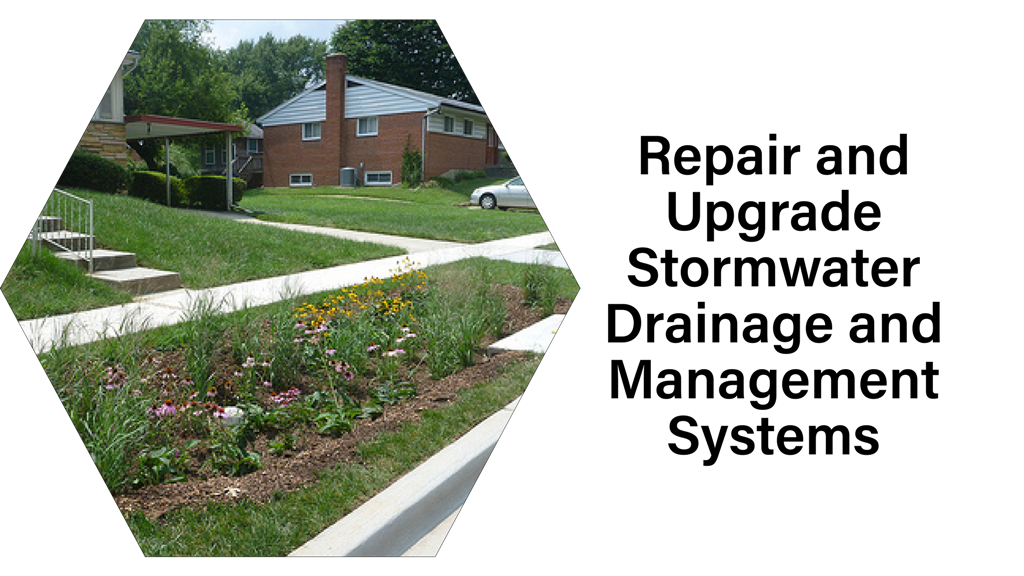 - Partner with the Department of Environmental Protection (DEP) to create “green streets” that are roadway landscaping designs built in the grassy area along County-owned streets. This improves water quality by using rain gardens, permeable pavers and other methods to filter rainwater onsite. Learn more.
- Clean and maintain existing storm drain systems and offer drainage improvement assistance to communities. The storm drain improvement program reduces flooding in vulnerable neighborhoods, decreasing harmful runoff from impervious surfaces that can increase water pollution.
- To reduce pollutants washing into local streams and rivers, MCDOT washes and degreases parking spaces in all garages twice a year to remove oil, gasoline and other residues. The washdown water goes through a sand filtration system to remove contaminants and particulates before processed water goes into the storm drain system.
- After every winter event, MCDOT cleans all snow equipment at an enclosed truck wash. The wash material is captured through a grate system and deposited into a containment tank. The tank contents are transported to a disposal site managed and certified by DEP and Washington Suburban Sanitary Commission.
- In the spring and summer, MCDOT conducts the ‘Refresh Montgomery’ litter and debris clean up that collects about 20 tons of trash along roadways in targeted corridors, benefitting water quality.
- In partnership with the Department of Environmental Protection, MCDOT’s street sweeping program cleans about 4,000 lane miles of roads, and annually removes 2,000 tons of debris that could otherwise be washed into streams. Priority is given to sweeping in sensitive watersheds.
- MCDOT annually collects 130,000 to 150,000 cubic yards of leaves that are stored for a year, then mulched, composted and packaged to be sold as Leafgro®. Learn more.
- Highway Services recycles its asphalt pavement; most of the asphalt used by Highway is derived from recycled pavement.
- MCDOT's Adopt A Road and Adopt A Spot programs have over 3,000 volunteers who actively clean county-owned roadways, keeping pollutants from washing into local watersheds and storm drains that lead to Chesapeake Bay. Learn more at montgomerycountymd.gov/adoptaroad.
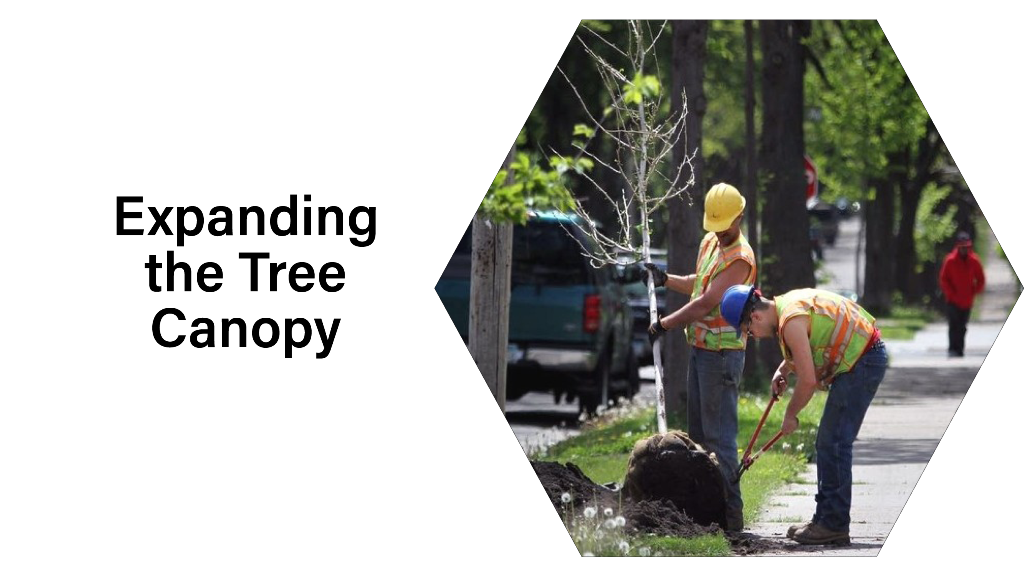 - MCDOT plants thousands of new trees every year and inspects and prunes existing trees on County right-of-ways. Trees reduce pollution in stormwater, greenhouse gas emissions, air conditioning needs and the heat island effect, while also improving air quality and increasing biodiversity.
- To ensure there is no net loss of natural areas resulting from projects, MCDOT has an active remediation program to replant trees and create wetlands.
Learn more at montgomerycountymd.gov/dot-highway/tree/index.html. 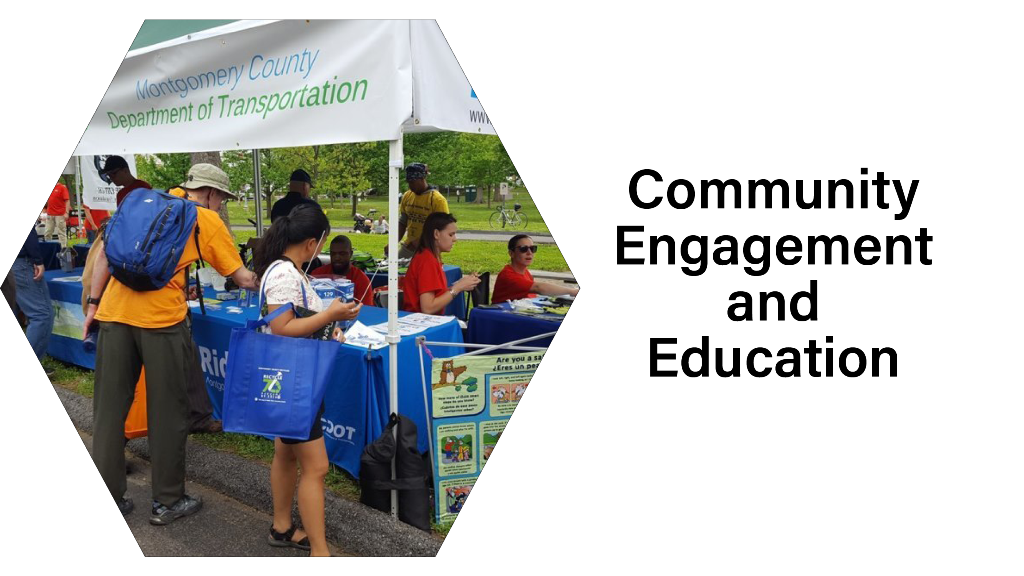 MCDOT engages the community on various services the department offers on greening initiatives and educational opportunities through virtual and in person events like Bike to Work Day, Car-Free Day, including webinars and bike classes. - MCDOT promotes DEP's annual Storm Drain Art Contest that uses creative art to emphasize the connection between storm drains, streams and the Chesapeake Bay. Youth paint storm drains with educational messages, reminding the community about the important water quality issues.
- MCDOT's Safe Routes to School program partners with County Police and Public Schools in hosting events that provide pedestrian and bike safety education, including school programs aimed at Kindergarten to High School students.
- Safe Routes to School hosts Bike Rodeos to teach students about bike and helmet safety
- Safe Routes to School Traffic Gardens have been provided, where children practice navigating roadways safely, applying bicycle and helmet safety, and are encouraged to learn about biking as a form of transportation.
- MCDOT participates in the annual GreenFest event to educate public on the department's green services.
- MCDOT participates in the Regional Street Smart Campaign throughout the year at various locations across the County to educate residents and to promote Vision Zero with safe walking and biking information.
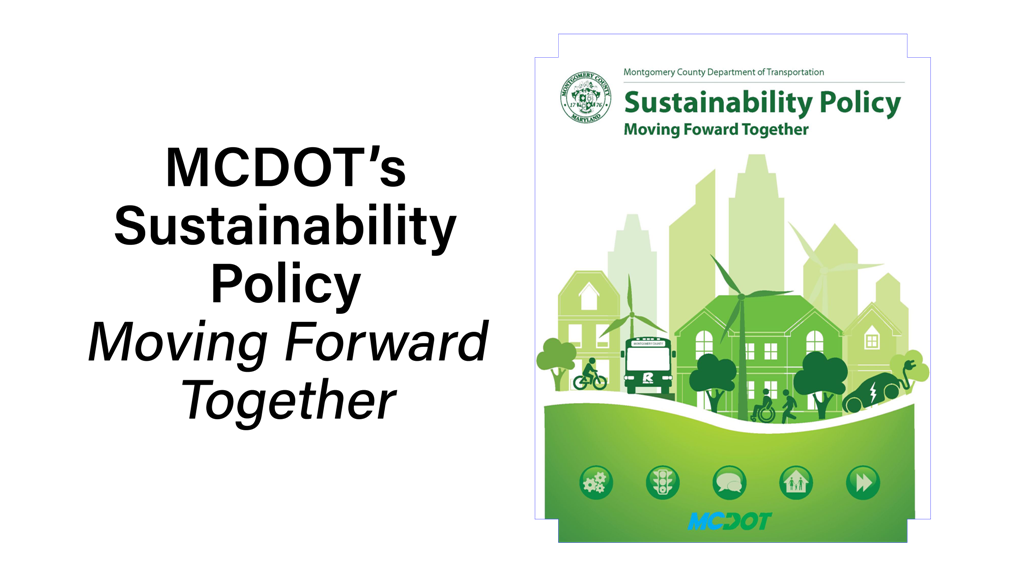 MCDOT recognizes that the County's expanding transportation system has far-reaching impacts. The way our streets are planned, the range of available transportation options, and the way projects are constructed and maintained influence our environment. To create an even more progressive transportation system that preserves the County’s environment and resources and enhances our quality of life into the future, MCDOT has established four Sustainability Goals to guide our decision making: - ENVIRONMENTAL SUSTAINABILITY: Plan and implement a transportation system that broadly considers ecosystem and climate impacts, reduces and prevents waste and pollution, uses renewable resources, uses sustainable sources of energy and reduces energy consumption.
- ECONOMIC SUSTAINABILITY: Support a public transportation infrastructure that stimulates economic prosperity, promotes economic development, and is cost effective and efficient.
- SOCIAL SUSTAINABILITY: Provide a transportation network that is accessible, affordable, safe, secure and equitable, and one that improves the health and quality of life for people who use it and live near it. Consider the basic needs of diverse residents and businesses and provide access and mobility for
all. Give back to communities by volunteering and donating resources. - SUSTAINABILITY EDUCATION: Ensure that residents, businesses and visitors are well informed about their sustainable travel options, help them make more sustainable decisions.
- View MCDOT's Sustainability Policy.
- View MCDOT's Green Initiatives.
As Montgomery County plans for a future with more jobs, more people, and more options, MCDOT’s Sustainability Policy supports a stronger and more vibrant community that is making even greater strides towards conserving natural resources, protecting the environment, promoting social equity, stimulating economic growth, and educating our residents. Through innovative approaches, we are creating a 21st century system that moves more people in fewer vehicles. A sustainable future means a higher quality of life for everyone in Montgomery County -- now and for generations to come. |




















